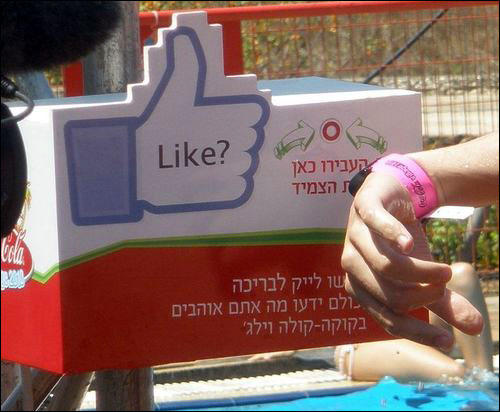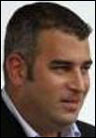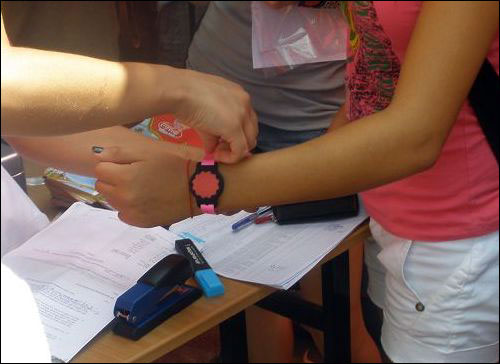This summer, a total of 6,500 Israeli teenagers attended a series of 10 festivals known as Coca-Cola Village, and all of them used RFID technology to share a large percentage of their experiences with friends and family through social networking site Facebook. Digital marketing group E-dologic developed and installed the system for Coca-Cola Israel, and managed the entire event through what became the most popular Facebook page in that country, with 80,000 users and 652,700 daily post views.
Each year, says Enon Landenberg, E-dologic’s cofounder and managing partner, the company attempts to outdo itself with new innovative ideas using technology to market Coca-Cola’s products. This year, the firm looked to Coca-Cola Village, an event that Coca-Cola Israel had already sponsored for the past two years. The event lasts three days and two nights, during which teens can play in an environment with no alcohol, but plenty of Coke products. The activities and entertainment include swimming, music, stand-up comedians, a spa and soccer.
Coca-Cola Village had already become popular, but Landenberg had an idea to amplify that popularity by utilizing a combination of RFID technology and Facebook access, in order to enable users to share the details of their visit with friends and family members. Each attendee was provided with a wristband containing a passive RFID tag that could be read at various attractions, as well as by staff members with portable readers, and the resulting information or pictures would then automatically be pasted on that user’s Facebook page. At the end of their visit, the teens returned the wristbands so that subsequent attendees could reuse them.
The 10 festivals, each lasting three days and two nights, were held sequentially throughout the six-week period at a hotel and park area in the Netanya region of Israel, and were completely organized on Facebook. The company set up a Coca-Cola Village Facebook page, inviting teenagers between ages 15 and 18 who are Facebook members to complete three requirements—obtaining 10 Coca-Cola can codes (which required consuming 10 cans of Coke), getting signed permission from parents and gathering a group of eight friends. The event cost $50 per person. When the 650 hotel reservations per event were made available on Facebook, they were all filled within 1.5 seconds, Landenberg says, with a total of 25,000 responses to the offer received from Israeli teens. A total of 6,500 teens attended throughout the six-week period, with 1,500 RFID-enabled wristbands put into service.
Once at the event, the teenagers checked into their rooms and were given a plastic bracelet adorned with what resembled a Coke bottle cap. Embedded within that bottle cap was a 125 kHz passive RFID tag complying with the ISO 11784 and 11785 standards, and encoded with a unique ID number that had been input into E-dologic’s software system, residing on its own server and linked to the wristband wearer’s Facebook account.
Installed across the site were 40 wooden boxes, known as “Like Machines,” approximately 18 inches in length and painted with the image of a hand giving the thumbs-up sign. The Like Machines, designed and built by Israeli RFID provider Ofer Leshem Ltd., each contained an RFID reader to capture the unique ID number of a user’s tag when that individual presented it within 35 centimeters (14 inches) of the box. The readers then forwarded the ID, number along with a date and time stamp, to the server (via a cellular connection), where E-dologic software linked the wristband’s ID number with the user’s Facebook page and posted information related to that specific attraction.
At the spa area, for example, if an individual tapped his or her wristband against the Like Machine, it would post an update on that person’s page, indicating, “I got the best massage of my life” at Coca-Cola Village. Some readers were posted at the park entrance, to identify when individuals arrived at the event for that day, as well as when they entered the site’s cafeteria to receive food and Coke drinks (included in the price of admission). Other interrogators were installed at various attractions.
Several days before the event had begun, Landenberg says, the system was already in place, and the company began considering other functions that could be added to the system as well. It came up with a feature that allowed visitors to post pictures on their personal Facebook pages. In this case, three staff members carried handheld RFID readers—attached to their shirts, or hung around their necks on a lanyard—as well as digital wireless cameras. If a teen wanted a picture of himself or herself taken and posted, that visitor could tap his or her wristband next to the employee’s reader. The worker would then take a picture of that individual, and the ID number on that person’s tag, along with the picture, would be received by the software, linked together and posted accordingly. Group pictures were also possible, Landenberg notes, with as many as 15 people providing their unique ID number on their wristband by tapping the reader; all 15 of those Facebook addresses would then be accessed, and the photo would be posted on each person’s page.

There was incentive for visitors to use the Like Machines often, Landenberg says. Those who had their wristbands read the most often on a particular day won prizes, and were invited onstage with performers in the evening. “There were 25 Likes for each visitor, on average,” he states, and a total of 1.5 million views and responses from those visiting the Coca-Cola Village Facebook site.
Moreover, the software allowed E-dologic to manage other functions at the event. For example, organizers knew how many people were at the site at any given time, because visitors presented their bracelets to readers each morning upon entering the park area. Organizers also knew who was at the cafeteria at meal times, and could estimate how many more would be coming, and thus organize meal preparation accordingly.
According to Landenberg, over the course of the six weeks the system was in use (from early July through mid-August), the company came up with additional ideas for the system. Next year, for example, he envisions building a large Coca-Cola can in which two people can enter together. A reader would be installed inside the can, and would capture the unique ID on each of the two wristbands that entered the space together. The software would then link the two IDs to Facebook addresses, and the two individuals would be listed as “friends” on Facebook.
The system benefited Coca-Cola Israel by increasing awareness of the event, Landenberg says, adding, “The Facebook guys are very happy with this.” Now, Landenberg is working with event organizers in other venues throughout the world to try a similar system using RFID-enabled wristbands. “This isn’t a solution that’s good for every client,” he notes, since the high use of Facebook, for instance, would not work with every audience, though it has generated considerable interest in the Middle East and Europe, he says, as well as in the United States. Meanwhile, he adds, Coca-Cola Village and its RFID-enabled Facebook system have been a hit with Israeli teenagers. “We’ve reached 100 percent—every teenager knows about it.”



